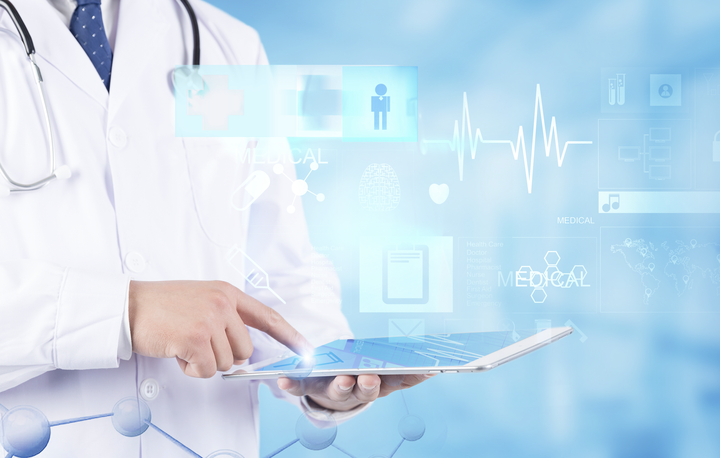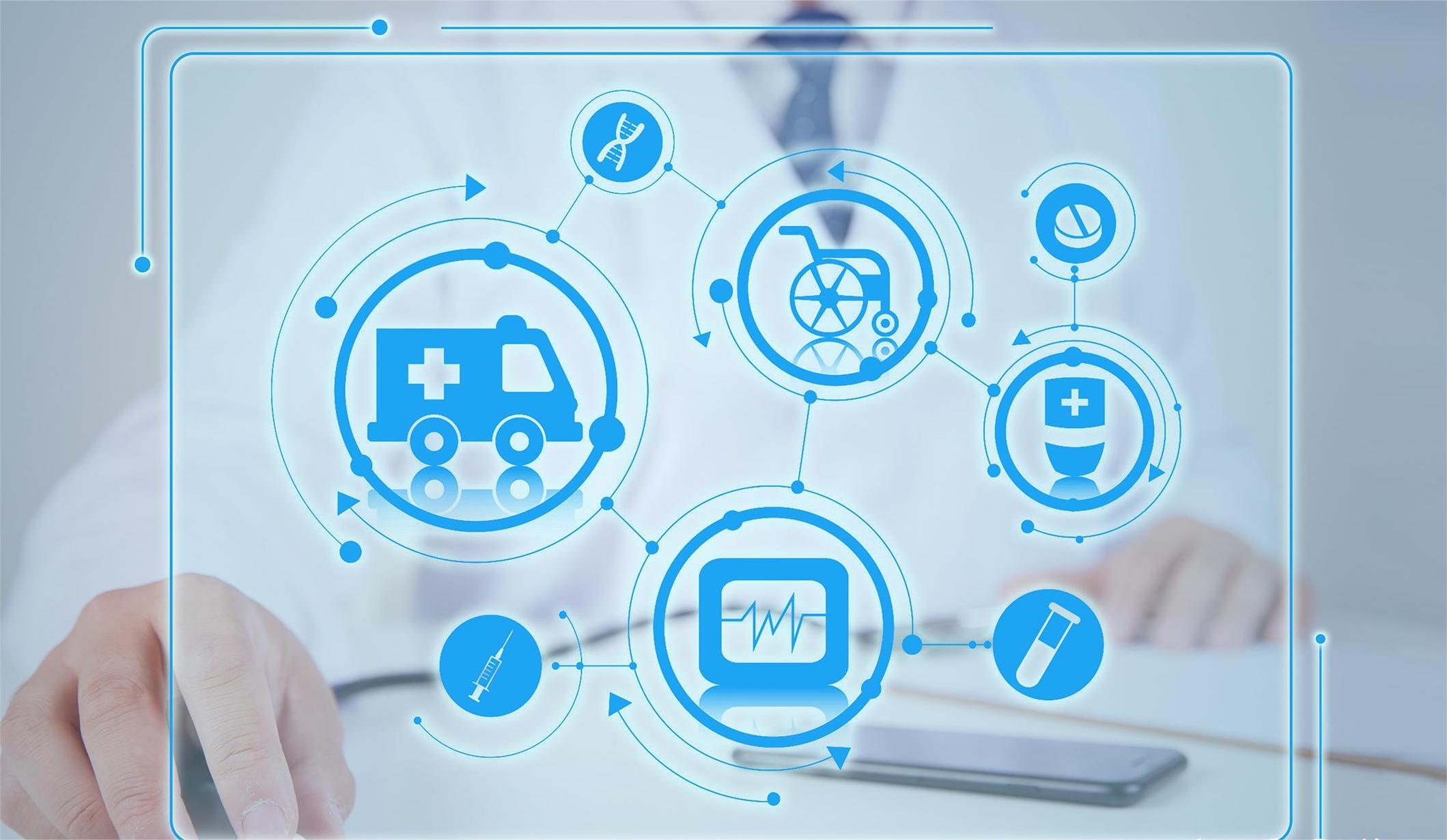
#Company ·2022-09-02
Smart healthcare is an important part of smart hospitals, which refers to a new type of medical service that applies modern information technology to improve patients' medical experience, enhance the quality of medical services, promote the interconnection and sharing of medical and patient information, and improve the level of intelligent medical services. 01 Definition of Smart Healthcare Smart healthcare, also known as intelligent healthcare or smart healthcare, refers to the use of modern technologies such as information technology, artificial intelligence, and big data analysis to intelligently transform and upgrade medical processes, services, and management, in order to improve the quality and efficiency of medical services, reduce medical costs, and achieve personalized and precise medical services. The core of smart healthcare lies in "intelligence", which is not only an extension of medical informatization, but also emphasizes intelligent decision support and automated service provision. Smart healthcare integrates and analyzes a large amount of medical data to provide doctors with intelligent decision support such as auxiliary diagnosis and treatment plan recommendations, while also providing personalized health management and disease prevention recommendations for patients. The implementation of smart healthcare relies on multiple key technologies, including but not limited to: Electronic Medical Record System (EMR): Implementing digital storage, querying, and statistical analysis of medical record information. Hospital Information System (HIS): Integrating medical information from various departments of the hospital, providing comprehensive medical information support. Clinical Information System (CIS): Provides clinical diagnosis and treatment support, disease monitoring, and auxiliary diagnosis functions. Medical Imaging Archiving and Communication System (PACS): Manage and transmit medical imaging data. Laboratory Information System (LIS): Automated collection, processing, analysis, and reporting of laboratory inspection information. 02 The role of smart healthcare in the healthcare system In the modern healthcare system, smart healthcare plays a crucial role. It can not only improve the quality and efficiency of medical services, but also optimize the allocation of medical resources, enhance the accessibility and fairness of medical services. Specifically, the role of smart healthcare is reflected in the following aspects: ● Improve diagnostic accuracy: Through intelligent analysis and pattern recognition, assist doctors in making more accurate diagnoses. Optimize treatment plan: Provide personalized treatment plan recommendations based on the specific situation of the patient. ● Enhance patient experience: Through intelligent services, reduce patient waiting time and provide a more convenient medical process. ● Implement optimized resource allocation: Through data analysis, allocate medical resources reasonably and improve the overall efficiency of medical services. ● Support remote medical services: Utilize network technology to provide high-quality medical services to remote areas. ● Promote medical research and innovation: By collecting and analyzing large amounts of medical data, promote medical research and new drug development. The development of smart healthcare is a key step towards achieving the strategic goal of "Healthy China". It will provide people with more convenient, efficient, and safe medical services, promote the innovation of medical service models, and upgrade the medical system. 03 The key information system of smart healthcare 3.1 Electronic Medical Record System (EMR) Electronic Medical Record System (EMR) is the core of intelligent medical information management, which records the entire process of patient diagnosis and treatment through digital means, including key medical information such as symptoms, diagnosis, and treatment plans. The advantage of EMR system lies in improving the efficiency and accuracy of medical record management, reducing medical record loss and human error, and providing comprehensive and accurate data support for clinical doctors and researchers. According to the latest market research, the popularity of EMR systems in global medical information construction is increasing year by year, and it is expected that by 2025, its market size will reach billions of dollars. 3.2 Hospital Information System (HIS) The Hospital Information System (HIS) integrates information resources from various departments of the hospital, covering registration, billing, medical orders, medical records, and other aspects. It is an important tool for hospital operation management informatization and standardization. The HIS system has strengthened the information flow and resource management within the hospital by improving work efficiency and service quality. According to statistics, hospitals implementing HIS systems have shown more outstanding performance in controlling operating costs and improving service quality, and patient satisfaction has correspondingly increased. 3.3 Clinical Information System (CIS) Clinical Information Systems (CIS) focus on providing clinical diagnosis and treatment support, disease monitoring, and auxiliary diagnosis functions, with patients at the center, serving clinical medical activities. The CIS system improves the quality and efficiency of medical process management by integrating patient clinical diagnosis and treatment data. With the development of medical big data and artificial intelligence technology, the application of CIS systems in clinical decision support and precision medicine is becoming increasingly widespread, becoming a key factor in improving the quality and efficiency of medical services. According to industry reports, the CIS market is expected to maintain stable growth in the coming years, especially in emerging economies where its growth potential is enormous. 04 Auxiliary system for smart healthcare 4.1 Medical Imaging Archiving and Communication System (PACS) PACS (Picture Archiving and Communication System) is a crucial component of smart healthcare, allowing medical institutions to efficiently store, retrieve, transmit, and display medical imaging data. The core advantage of PACS system lies in its ability to seamlessly integrate various imaging devices, such as CT, MRI, X-ray, etc., to achieve digital management of image data. Data Management: PACS systems are capable of processing massive amounts of medical imaging data, ensuring fast access and smooth image transmission through efficient data compression and indexing techniques. Remote diagnosis: PACS supports remote healthcare, allowing doctors to diagnose patients across geographical limitations, especially during epidemics, demonstrating its importance. Quality control: The system's built-in image processing functions, such as image enhancement and annotation, help improve the accuracy of diagnosis. 4.2 Laboratory Information System (LIS) Laboratory Information System (LIS) is a system specifically designed for automating laboratory workflows. It not only improves the efficiency of laboratory operations, but also ensures the accuracy and traceability of data. Automated process: LIS automates the entire process of sample collection, testing, and report generation, reducing human errors and improving work efficiency. Data integration: The system can be integrated with other hospital information systems such as HIS and EMR to achieve seamless sharing and unified management of data. Report generation: LIS can quickly generate test reports and send them electronically to doctors and patients, accelerating the diagnosis and treatment process. 4.3 Radiology Information System (RIS) Radiology Information System (RIS) is a management tool designed specifically for radiology, which optimizes the daily operations of radiology and improves the quality of medical services. ● Appointment scheduling: The RIS system provides a centralized platform for managing patient appointments and scheduling, ensuring the rational allocation of radiology resources. Image and report management: The system allows radiologists and doctors to easily access patients' images and reports, promoting cross departmental collaboration. Quality monitoring: The RIS system tracks the workflow of the radiology department, monitors service quality, and helps improve operational processes through data analysis. The above systems are indispensable components of smart healthcare, providing strong technical support for medical services through efficient information management and process optimization, thereby improving patients' medical experience and the quality of medical services.

2022-09-02

2022-09-02

2022-09-02
You can send us a general question inquiry here
LINKS



0371-23627927
consult
top